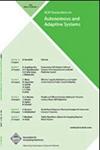添加多公差的复杂性
IF 2.1
4区 计算机科学
Q3 COMPUTER SCIENCE, ARTIFICIAL INTELLIGENCE
引用次数: 2
摘要
我们主要研究在现有的容错程序中增加多容错的问题。多容错程序可以容错多种类型的错误,并为每种错误提供不同级别的容错。我们考虑了三个级别的容错,即故障安全(即,在故障存在时满足安全性)、非屏蔽(即,在故障发生后恢复到合法状态)和屏蔽(两者都有)。对于程序受两类故障影响的情况,我们考虑六类多容错程序——ff、FN、FM、MM、MN和NN,其中F、N和M表示为每一类故障提供的容错级别的故障安全、非屏蔽和屏蔽。我们证明了FF、NN和MN多容差的添加问题可以在多项式时间内(在程序的状态空间中)得到解决。然而,对于添加FN、MM和FM多公差,问题是np完全的。我们注意到,添加MM和FM多容差的难度尤其不典型,因为MM和FM多容差可以在更有限的情况下有效地添加,即在同一计算中同时发生多个故障。我们还提出了管理MM多容差复杂性的启发式方法。最后,我们提出了现实世界的多容忍程序,并讨论了在开发此类程序时设计决策所涉及的权衡。本文章由计算机程序翻译,如有差异,请以英文原文为准。
The Complexity of Adding Multitolerance
We focus on the problem of adding multitolerance to an existing fault-intolerant program. A multitolerant program tolerates multiple classes of faults and provides a potentially different level of fault tolerance to each of them. We consider three levels of fault tolerance, namely failsafe (i.e., satisfy safety in the presence of faults), nonmasking (i.e., recover to legitimate states after the occurrence of faults), and masking (both). For the case where the program is subject to two classes of faults, we consider six categories of multitolerant programs—FF, FN, FM, MM, MN, and NN, where F, N, and M represent failsafe, nonmasking, and masking levels of tolerance provided to each class of fault. We show that the problem of adding FF, NN, and MN multitolerance can be solved in polynomial time (in the state space of the program). However, the problem is NP-complete for adding FN, MM, and FM multitolerance. We note that the hardness of adding MM and FM multitolerance is especially atypical given that MM and FM multitolerance can be added efficiently under more restricted scenarios where multiple faults occur simultaneously in the same computation. We also present heuristics for managing the complexity of MM multitolerance. Finally, we present real-world multitolerant programs and discuss the trade-off involved in design decisions while developing such programs.
求助全文
通过发布文献求助,成功后即可免费获取论文全文。
去求助
来源期刊

ACM Transactions on Autonomous and Adaptive Systems
工程技术-计算机:理论方法
CiteScore
4.80
自引率
7.40%
发文量
9
审稿时长
>12 weeks
期刊介绍:
TAAS addresses research on autonomous and adaptive systems being undertaken by an increasingly interdisciplinary research community -- and provides a common platform under which this work can be published and disseminated. TAAS encourages contributions aimed at supporting the understanding, development, and control of such systems and of their behaviors.
TAAS addresses research on autonomous and adaptive systems being undertaken by an increasingly interdisciplinary research community - and provides a common platform under which this work can be published and disseminated. TAAS encourages contributions aimed at supporting the understanding, development, and control of such systems and of their behaviors. Contributions are expected to be based on sound and innovative theoretical models, algorithms, engineering and programming techniques, infrastructures and systems, or technological and application experiences.
 求助内容:
求助内容: 应助结果提醒方式:
应助结果提醒方式:


